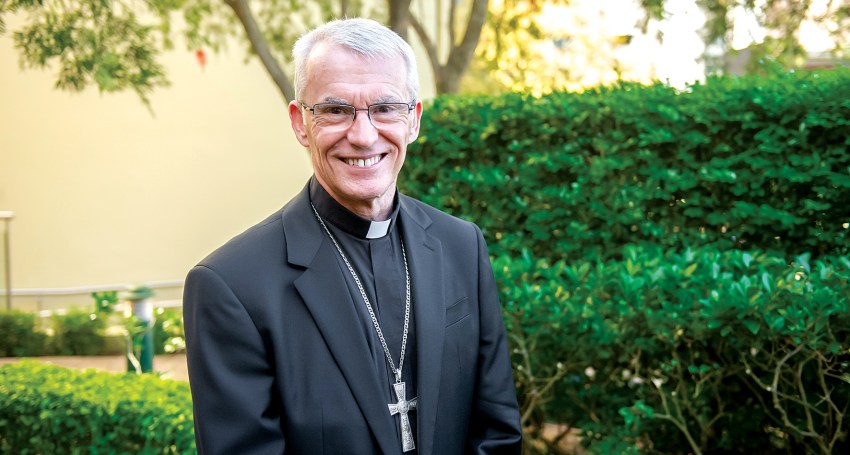Fewer Catholics taking up the 'gift' of faith
News
The latest Census figures released in June by the Australian Bureau of Statistics have revealed a decline in the number of Australians identifying as Christians, from 52.1 per cent in 2016 to 43.9 per cent in 2021.

One in five Australians, or around 20 per cent of the Australian population, identified as Catholic. This was a slight decrease from the previous Census when Catholics made up 22.6 per cent of all Australians.
The Anglican Church, the second largest Christian denomination, had the biggest drop of all religious denominations, from 3.1 million to 2.5 million, a decrease of nearly 13.3 per cent to 9.8 per cent of the population.
In South Australia, the number of people identifying as Christians decreased from 823,426 in 2016 to 712,815 in 2021. A breakdown of Christian denominations by State/Territory is not yet available.
Advertisement
President of the Australian Catholic Bishops Conference, Archbishop Timothy Costelloe SDB, said the Census figures were not surprising.
“It’s almost a cliché to say that the values of the Church and the values of the society in which we live are growing further and further apart,” he said.
“Clearly the Church does not hold the privileged position in our society that it once had.
“In such a situation, my firm conviction is that…we should endlessly propose but never impose our beliefs on others.
“There is a coherent Catholic vision, based on key presuppositions (God exists, God is made known fully and finally in Jesus Christ, Jesus Christ establishes the Church and animates it through his Spirit to be the living sacrament of his presence) which means that the Church has a wisdom to offer our world as a precious gift.
“But gifts can only be offered, never forced on people, and people are free to receive or reject the gifts. We are called to reveal the beauty of the gift both by what we say and what we do, and to be sure that we offer the gift in its fullness as given to us by God.”
The National Centre for Pastoral Research (NCPR) said the 2021 Census revealed much religious diversity within the Australian community.
By far, Christianity continued to be the most common of the religious groups, comprising 43.9 per cent of the population, with Australians identifying with non-Christian religions growing from 8.2 per cent of the population in 2016 to 10 per cent in 2021.
The number of Australians not identifying with any religious group also continued to grow, and in 2021 they made up 38.9 per cent of the population, up from 30.1 per cent in 2016. In SA the percentage of South Australians with ‘no religion’ was 45.3 per cent.
Although the religion question is the only optional question in the Census, it was completed by 93 per cent of Australians.
The number of Catholics has grown at every Census until 2016, when there was a decrease from around 5.4 million from five years earlier to 5.3 million. The decline continued in 2021, when there were around 215,000 fewer people identifying as Catholic than in 2016.
While the percentage of Catholics in the community remained relatively steady in the 50 years between 1961 and 2011, the declines in 2016 and 2021 mean that the proportion of Catholics in the Australia population is now similar to the first few decades of the 20th century.
Advertisement
According to the ABS Cultural Diversity report, the decrease in Catholicism has been slowed by immigration from regions with high numbers of followers of Catholicism, such as South East Asia and South America.
Of all migrants who came to Australia between 2016 and 2021, almost 200,000 reported an affiliation with Catholicism in the 2021 Census, more than one quarter of whom were born in the Philippines.
Catholics born in Australia dropped from 73.6 per cent to 72 per cent and the highest proportion of Catholics born overseas immigrated from South East Asia (6.6 per cent), followed by southern and eastern Europe (5.6 per cent) and north west Europe (4.8 per cent).
Females accounted for 52.9 per cent of the Catholic population, slightly higher than in 2016, when 52.5 per cent of all Catholics were women.
New South Wales had the highest proportion of its population who identified as Catholic (22.4 per cent), while Tasmania had the lowest (12.7 per cent).
Once further statistics are released by the ABS, the NCPR will produce national and diocesan social profiles for distribution in 2023. It is hoped that parish profiles, which need additional work to define parish boundaries, will be developed by late 2023 or early 2024.








Comments
Show comments Hide comments